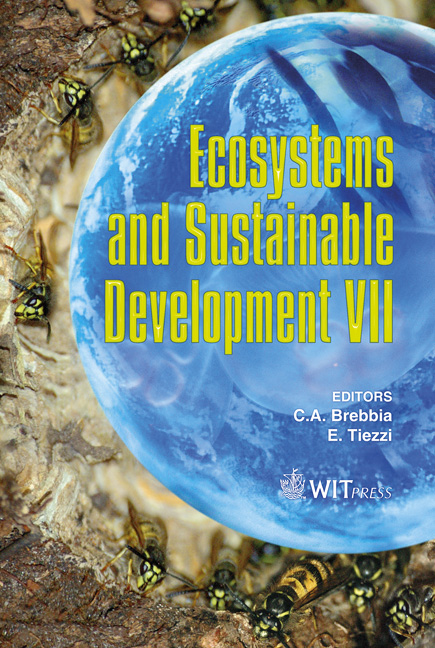Modelling The Effect Of Temperature And Photoperiod On The Faba Bean (Vicia Faba L.)
Price
Free (open access)
Transaction
Volume
122
Pages
8
Page Range
53 - 60
Published
2009
Size
273 kb
Paper DOI
10.2495/ECO090061
Copyright
WIT Press
Author(s)
Y. Villacampa, A. Confalone, M. Cortés, B. Ruíz-Nogueira & F. Sau
Abstract
N-fixing legume crops may be a good component of a general plan to improve cropping system efficiency. For this purpose, crop suitability to specific environments must be established. Irrigated field experiments were conducted for three years (2004–2007) with cv. ‘Alameda’ sown on five different dates in each year. This article examines the phenologic response of the faba bean (Vicia faba L.) crops to various thermal and photoperiod regimes. For this purpose first the authors have used the concept of the development rate (inverse to duration) developed by Wit et al. (The simulation of photosynthetic systems, 1970) and the development rate as the inverse of the time between sowing and flowering (1/f) defined by Hadley et al. (Effects of temperature and photoperiod on flowering in soya bean [Glycine max (L.) Merril]: a quantitative model, 1984). In this way, if a crop has a long period between sowing and flowering (f: days), it will have a low development rate (1/f: days-1), so it can then analyse the length of the period by means of the 1/f the development rate. In second place families of mathematical models have been obtained by applying the methodology developed by Villacampa et al. (A new computational algorithm to construct mathematical models, 1999) and Cortés et al. (A new methodology for modelling highly structured systems, 2000) that will be compared with the linear model widely used for legumes (Summerfield et al. Measurement, prediction and genetic characterisation of flowering in Vicia faba and Pisum sativum, 1991). In the family of models produced it will select those that best express the crop phenologic response in different phenologic stages. Keywords: mathematical modelling, stability, faba bean, phenology, legumes, photoperiod, temperature.
Keywords
mathematical modelling, stability, faba bean, phenology, legumes, photoperiod, temperature





